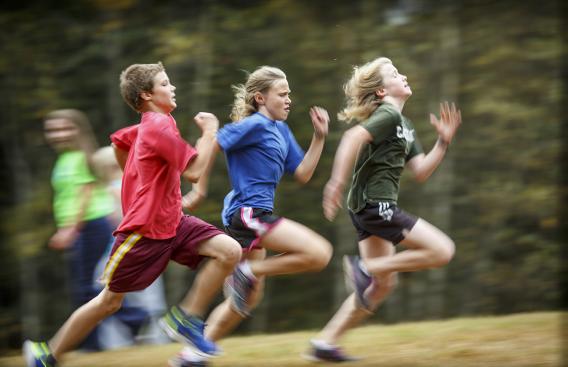Adolescents lead active and energetic lives, often taking part in multiple sporting activities a week. With participation in organised sport at a peak, this has lead to an associated increase in injury. Commonly, young athletes suffer from two types of injuries: acute traumatic and chronic overuse injuries. Adolescents suffer from similar injuries as adults, however due to their growing bodies they have a risk for injuries to growth plates, apophysis and joint surfaces. Their bones are still growing so repetitive stress or sudden large forces can cause injury to these surfaces.
Acute injuries
Acute trauma in young adolescents commonly includes fractures, dislocations, contusions, muscle strains and ligament sprains. Adolescents have an immature skeleton with open growth plates and weaker bones, therefore skeletal injuries such as fractures are common. Fractures account for 20-30% of sports related injuries in the ED. Dislocations commonly include the shoulder and patella. 14-18 year old female swimmers and gymnasts at the highest risk.
Strains occur when the muscle is overloaded resulting in disruption or tearing of muscle fibres. Most will resolve completely, however hamstring strains in adolescents can lead to disability at an older age if left untreated. Physiotherapy to improve flexibility and strength of the hamstring can help with symptom resolution. Ligament injuries such as sprains and tears can range from lateral ankle rolls to ACL injuries.
Common acute injuries include:
- Fractures
- Dislocations
- Muscle strains
- Ligament sprains
Overuse Injuries
Overuse injuries involve repetitive microtrauma on the musculoskeletal system without enough recovery. These types of injuries commonly arise after rapid increases in training load. They also occur in athletes training at consistently high levels.
Common overuse injuries include apophysitis, chronic anterior knee pain, stress fractures and tendonitis. Tendonitis is less commonly seen in children due to the attachment site of the tendon to bone being weaker than the tendon itself. Instead, apophysitis will occur. Apophysitis results from chronic traction of a tendon at its insertion, leading to inflammation and irritation at the site. This usually occurs during periods of rapid growth in childhood and adolescents. It’s a self limiting condition which is treated conservatively. Sites apophysitis can occur include, the hip, knee, heel and elbow.
Common overuse injuries include:
- Osgood-Schlatters disease (knee)
- Sinding-Larsen-Johansson syndrome (knee)
- Sever’s disease (heel)
- Little league elbow
- Shin splints
- Patellofemoral pain syndrome
- Stress fractures
Risk Factors for injury in adolescents
- Increased training loads
- Rapid growth spurt
- Reduced recovery periods
- Lack of sleep
- Inadequate shoes/ equipment
- Training the same muscles all year round
How long do these Injuries take to improve?
Every case is different depending on severity and type. Overuse injuries could take as little as 1-2 weeks to settle and up to months for more acute traumatic injuries.
How can a physiotherapist help?
Management of acute niggles and the rehabilitation of injuries are just as important in childhood as they are in adults. Management at a young age helps prevent lifelong troubles with musculoskeletal injury. A Physiotherapist can assess, diagnose and help manage sports injuries.
Most children play multiple sports and have multiple training sessions for each. Physiotherapists can help to modify training loads and ensure overtraining or burnout doesn’t take place. Some injuries will need treatment from a physiotherapist to help aid recovery and prevent reoccurance. We can also assess and identify any strength or flexibility deficits which may put a child at higher risk of injury.
Preventing injuries in adolescents
50% of sporting injuries to adolescents are preventable. Preventative efforts must be made to ensure that an adequate warm up and warm down is done. Warm ups/ down should include a mix of cardio, stretching, flexibility and strength work.
Fatigue can play a major role in causing injuries so it’s important to have adequate rest and recovery. Getting a minimum of 8 hours sleep a night can help in the prevention of chronic and overuse injuries. Allowing the body to recover, sleep is needed to avoid overtraining and decrease the risk of injury.
Nutrition and hydration also play an important role in recovery. This allows the growing body to replenish and refuel. Wearing appropriate protective wear and supportive athletic shoes also help to prevent injuries. Playing multiple sports, at different times of the year, also helps by giving some muscles and joints a chance to rest.
Early intervention and treatment of adolescent injuries can have a big impact on reducing the amount of time missed from the sporting field. A physio can help to identify any overuse or acute injuries and help modify training loads for quick recovery.
~Alex
Check out Alex’s profile here

